Imagine this: you’ve just finished baking a batch of delectable toffee bars, their golden aroma filling the air with promises of sweet indulgence.
As you eagerly reach for your favorite glass pan to unveil your culinary masterpiece, dread sets in as you notice the stubborn remnants of sticky toffee clinging to the bottom and sides. Panic not, for in the realm of culinary conundrums, this is but a minor obstacle.
With a few clever tricks up your sleeve, you’ll soon discover that liberating your glass pan from the clutches of toffee residue is a breeze.
So, let’s embark on a journey to reclaim the pristine glory of your beloved glass pan, and bid adieu to sticky situations with finesse and flair.
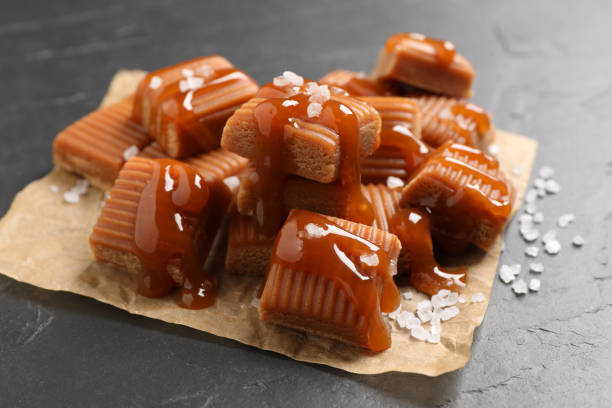
How To Get Toffee Out Of Glass Pan
Certainly! Removing toffee from a glass pan can be a sticky situation, but with the right steps, it’s manageable. Here’s a step-by-step process to guide you through:
Let it Cool
Allow the toffee and the glass pan to cool completely. Trying to remove hot toffee can be dangerous and messy.
Assess the Situation
Examine the edges of the toffee to see if there are any loose or slightly lifted parts. If there are, gently pry them away from the glass with a butter knife or a spatula.
Heat Water
Fill your sink or a large basin with hot water. The water should be hot but not boiling.
Soak the Pan
Place the glass pan in the hot water, ensuring that the water level is high enough to submerge the bottom of the pan where the toffee is stuck.
Wait
Allow the glass pan to soak in the hot water for at least 15-20 minutes. The heat will help to soften the toffee and loosen its grip on the glass surface.
Use a Spatula
After soaking, use a spatula or a butter knife to gently pry the edges of the toffee away from the glass. Be patient and work slowly to avoid breaking the toffee or damaging the glass.
Apply Warmth
If the toffee is still stuck, you can try applying some warmth directly to the bottom of the glass pan. You can do this by placing the pan on a warm stovetop or by using a hairdryer on a low heat setting to warm the glass.
Continue Gently Scraping
As the toffee softens, continue to gently scrape it away from the glass using your spatula or butter knife. Work your way around the edges of the toffee until it is completely loosened from the pan.
Clean Up
Once you’ve removed all the toffee from the glass pan, wash the pan with warm, soapy water to remove any residue. You may need to soak the pan again if there are stubborn spots.
Dry Thoroughly
After washing, dry the glass pan thoroughly with a clean towel to prevent water spots or any remaining stickiness.
Optional
Use Baking Soda Paste: If there are stubborn residue spots, you can make a paste using baking soda and water. Apply the paste to the affected areas, let it sit for a few minutes, then scrub gently with a sponge or cloth.
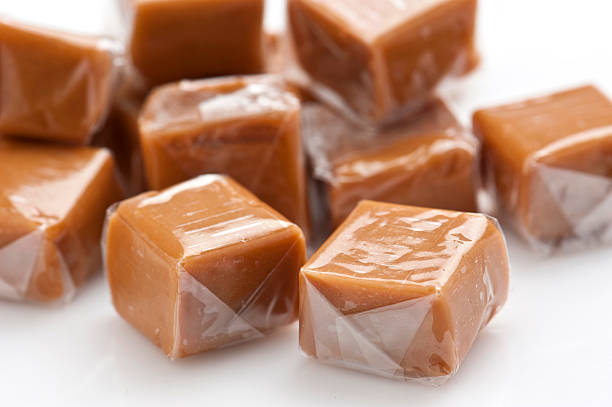
Understanding the Toffee-Glass Bond
Toffee, with its delectable sweetness and satisfying chewiness, has delighted taste buds for centuries. But along with its delicious qualities comes a notorious stickiness that can make it a challenge to work with, especially when it comes into contact with glass surfaces.
This phenomenon of the toffee-glass bond presents an intriguing puzzle, blending the science of materials and confectionery.
Toffee’s Sticky Nature
Toffee’s stickiness stems from its composition, primarily consisting of sugar, butter, and sometimes additional flavorings like nuts or chocolate. Sugar is hygroscopic, meaning it readily absorbs moisture from the environment.
As toffee cools and solidifies, its sugar content forms a dense matrix that traps moisture within its structure. This moisture contributes to the toffee’s adhesive properties, causing it to cling tenaciously to surfaces it comes into contact with, like glass.
Moreover, the butter in toffee adds to its stickiness. Butter is a fat, and fats have a natural affinity for sticking to surfaces. When combined with sugar and heated, butter helps form a cohesive mixture that adheres strongly to whatever surface it touches.
Glass Pan’s Non-Stick Surface
Glass pans are commonly used in baking due to their smooth, non-reactive surfaces. Unlike metal pans, glass doesn’t react chemically with the toffee during cooking, preserving the flavor and quality of the confection. Glass is an excellent conductor of heat, ensuring even cooking of the toffee mixture.
The non-stick nature of glass, while advantageous for most baking purposes, becomes a challenge when dealing with sticky substances like toffee.
Unlike porous materials such as wood or certain types of metal, which may absorb some of the toffee’s moisture and loosen its grip, glass provides a smooth, impermeable surface for the toffee to adhere to, enhancing its stickiness.
Why it’s Difficult to Remove Toffee
Removing toffee from a glass surface can be a frustrating task due to the strong bond formed between the two materials. As the toffee cools and solidifies on the glass pan, its sticky composition adheres firmly to the smooth surface.
Attempting to pry the toffee off may result in fragments remaining stuck to the glass, making cleanup a painstaking process.
Furthermore, the temperature differential between the hot toffee and the cooler glass pan upon removal from the oven can exacerbate the bond. As the toffee cools rapidly upon contact with the glass, it solidifies even further, enhancing its adhesive properties.
Preparing for Toffee Removal
Safety Precautions
Before attempting to remove toffee from a glass surface, it’s essential to prioritize safety to prevent burns or injuries. Here are some safety precautions to consider:
- Allow Sufficient Cooling Time: Ensure that the toffee and glass pan have cooled adequately before attempting removal. Hot toffee can cause severe burns, so patience is key to avoid accidents.
- Use Heat-Resistant Gloves: If the toffee or glass pan is still warm, wear heat-resistant gloves to protect your hands from burns while handling the pan or applying heat for removal.
- Work in a Well-Ventilated Area: If using heat to soften the toffee, ensure proper ventilation to prevent the buildup of fumes from the heating process.
- Exercise Caution with Sharp Tools: When using knives or other sharp tools for toffee removal, handle them carefully to avoid accidental cuts or injuries.
Tools and Materials Needed
Having the right tools and materials on hand can make the toffee removal process more manageable and efficient. Here’s a list of items you may need:
- Heat Source: Depending on the severity of the toffee-glass bond, you may require a heat source such as a hairdryer, heat gun, or oven to soften the toffee for easier removal.
- Spatula or Butter Knife: A spatula or butter knife can be used to gently pry the toffee away from the glass surface without scratching or damaging it.
- Plastic Scraper: A plastic scraper can help lift stubborn toffee without scratching the glass. Avoid using metal tools that may damage the pan.
- Cleaning Solution: Prepare a cleaning solution of warm water and mild dish soap to clean the glass surface after removing the toffee residue.
- Towels or Rags: Keep towels or rags handy to wipe away excess moisture or cleaning solution during the removal process.
Assessing the Toffee-Glass Situation
Before beginning the removal process, take some time to assess the extent of the toffee-glass bond. Consider the following factors:
- Thickness of the Toffee: Thicker layers of toffee may require more time and effort to remove compared to thinner layers.
- Adhesion Strength: Determine how firmly the toffee is bonded to the glass surface. If it’s tightly stuck, you may need to apply heat to soften it before attempting removal.
- Fragility of the Glass: Take into account the fragility of the glass pan to avoid causing damage during the removal process. Be gentle and avoid using excessive force that could lead to cracks or breakage.
By taking appropriate safety precautions, gathering the necessary tools and materials, and assessing the toffee-glass situation, you can prepare effectively for the toffee removal process. With care and patience, you can successfully remove stubborn toffee residue from glass surfaces while minimizing the risk of accidents or damage.
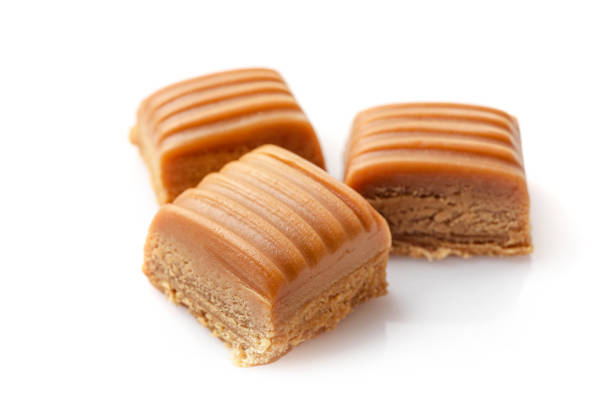
Methods for Toffee Removal
Heat and Water Method
Explanation of the Technique
The heat and water method is a common approach used to soften hardened toffee, making it easier to remove from glass surfaces. By applying heat to the toffee, its adhesive properties are weakened, allowing it to be loosened and separated from the glass. The addition of water helps to further soften the toffee and facilitate its removal without damaging the glass.
Step-by-Step Process
Step 1: Prepare the Work Area
Ensure that the toffee and glass pan have cooled completely before beginning the removal process. Place the glass pan on a heat-resistant surface to protect countertops or other surfaces from heat damage.
Step 2: Apply Heat
Using a hairdryer, heat gun, or oven set to a low temperature, apply heat directly to the toffee-covered area of the glass surface. Keep the heat source moving to distribute the warmth evenly across the toffee.
Step 3: Add Water
Once the toffee has been warmed, moisten a clean cloth or sponge with warm water. Gently dab the water onto the softened toffee, allowing it to penetrate the surface.
Step 4: Gently Pry and Lift
Using a plastic spatula or butter knife, carefully pry the softened toffee away from the glass surface. Work slowly and patiently, lifting small sections of toffee at a time to avoid damaging the glass.
Step 5: Repeat as Needed
Continue applying heat and water as necessary until all of the toffee has been removed from the glass surface. Be prepared to repeat the process several times, especially if the toffee is particularly stubborn or thick.
Tips for Success
- Monitor the Temperature: Avoid using excessive heat, as this can damage the glass surface. Start with a low heat setting and gradually increase if needed.
- Be Patient: Removing toffee from glass can be a time-consuming process. Take your
- time and work methodically to avoid causing damage.
- Use Gentle Pressure: Apply only enough pressure to loosen the toffee from the glass. Avoid using excessive force, which could lead to scratches or cracks.
- Clean Thoroughly: Once the toffee has been removed, clean the glass surface with warm, soapy water to remove any residue. Rinse thoroughly and dry with a clean towel.
- Consider Alternative Methods: If the heat and water method is unsuccessful, try using a commercial adhesive remover or vinegar solution to break down the toffee’s adhesive properties.
By following these steps and tips, you can effectively remove stubborn toffee from glass surfaces using the heat and water method. With patience and care, you can restore your glass pan to its original condition without causing damage.
Freezing Method
Explanation of the Technique
The freezing method is an alternative approach for removing hardened toffee from glass surfaces. By subjecting the toffee-covered glass pan to freezing temperatures, the toffee becomes brittle and contracts, making it easier to separate from the glass.
This technique exploits the principle that extreme cold can weaken the adhesive properties of the toffee, allowing it to be more easily dislodged.
Step-by-Step Process
Step 1: Cool the Toffee
Allow the toffee-covered glass pan to cool completely at room temperature before beginning the freezing process. This ensures that the toffee has hardened fully and is ready for removal.
Step 2: Place in the Freezer
Carefully transfer the glass pan to the freezer and position it so that the toffee-covered surface is exposed. Make sure there is enough space around the pan to allow for air circulation.
Step 3: Freeze the Toffee
Leave the glass pan in the freezer for at least 1-2 hours, or until the toffee feels completely frozen and brittle to the touch. The exact time may vary depending on the thickness of the toffee layer and the temperature of your freezer.
Step 4: Remove from Freezer
Once the toffee is thoroughly frozen, carefully remove the glass pan from the freezer and place it on a stable surface. Allow it to sit at room temperature for a few minutes to slightly warm up, which can help prevent thermal shock to the glass.
Step 5: Pry and Lift
Using a plastic spatula or butter knife, gently pry the frozen toffee away from the glass surface. Work slowly and carefully, lifting small sections of toffee at a time to avoid damaging the glass. If necessary, you can also tap the underside of the glass pan to help loosen the toffee.
Step 6: Clean the Glass
Once all of the toffee has been removed, clean the glass surface with warm, soapy water to remove any residue. Rinse thoroughly and dry with a clean towel.
Tips for Success
- Ensure Adequate Freezing Time: Make sure the toffee is frozen completely solid before attempting to remove it. Insufficient freezing time may result in the toffee being too soft and difficult to pry away.
- Be Gentle: Handle the glass pan with care to avoid causing damage during the removal process. Avoid using excessive force, which could lead to scratches or cracks.
- Use Plastic Tools: Opt for plastic spatulas or butter knives to avoid scratching the glass surface. Metal tools should be avoided as they can damage the pan.
- Patience is Key: Removing toffee with the freezing method may take some time and patience. Work methodically and persistently, and avoid rushing the process.
- Consider Re-Freezing: If the toffee starts to soften during removal, return the glass pan to the freezer for additional freezing time before continuing.
By following these steps and tips, you can successfully remove hardened toffee from glass surfaces using the freezing method. With patience and care, you can restore your glass pan to its original condition without causing damage.
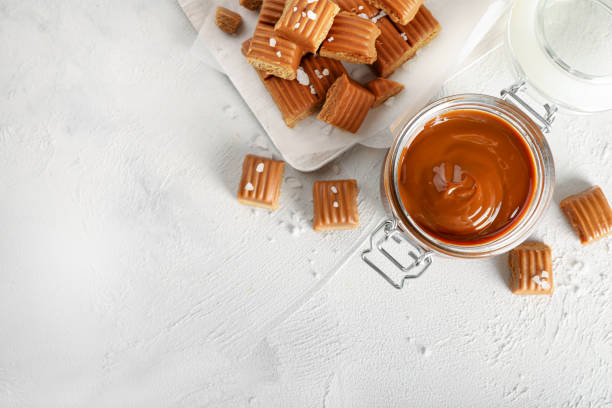
Soaking Method
Explanation of the Technique
The soaking method involves immersing the toffee-covered glass pan in water to soften the toffee and facilitate its removal. By allowing the toffee to soak in water, its adhesive properties are weakened, making it easier to pry away from the glass surface.
This technique relies on the principle of hydration, where water penetrates the toffee, causing it to swell and become more pliable.
Step-by-Step Process
Step 1: Prepare the Work Area
Ensure that the glass pan and toffee have cooled completely before beginning the removal process. Fill a sink or basin with enough warm water to fully submerge the toffee-covered portion of the glass pan.
Step 2: Submerge the Glass Pan
Carefully place the toffee-covered glass pan into the warm water, ensuring that the toffee-covered surface is fully submerged. Allow the glass pan to soak for at least 30 minutes to an hour, or until the toffee begins to soften.
Step 3: Check for Softening
Periodically check the glass pan to assess the softening progress of the toffee. The warm water should gradually soften the toffee, making it easier to pry away from the glass surface. If necessary, gently agitate the water or use a soft brush to help loosen the toffee.
Step 4: Pry and Lift
Once the toffee has softened sufficiently, use a plastic spatula or butter knife to gently pry it away from the glass surface. Work slowly and carefully, lifting small sections of toffee at a time to avoid damaging the glass. If the toffee is still stubborn, return the glass pan to the water and continue soaking.
Step 5: Clean the Glass
Once all of the toffee has been removed, clean the glass surface with warm, soapy water to remove any residue. Rinse thoroughly and dry with a clean towel.
Tips for Success
- Use Warm Water: Warm water helps to soften the toffee more effectively than cold water. However, avoid using water that is too hot, as it may damage the glass pan.
- Be Patient: Removing toffee with the soaking method may take some time, especially for thicker or more stubborn layers. Allow the toffee to soak adequately to ensure it softens enough for easy removal.
- Monitor the Water Temperature: Check the water temperature periodically to ensure it remains warm throughout the soaking process. Refresh the water if it starts to cool down.
- Use Plastic Tools: Plastic spatulas or butter knives are ideal for prying away the softened toffee to avoid scratching the glass surface. Metal tools should be avoided as they can damage the pan.
- Consider Adding Detergent: If the toffee is particularly stubborn, adding a small amount of dish soap to the warm water may help break down its adhesive properties more effectively.
By following these steps and tips, you can successfully remove hardened toffee from glass surfaces using the soaking method. With patience and care, you can restore your glass pan to its original condition without causing damage.
Chemical Method (Using Baking Soda)
Explanation of the Technique
The chemical method involving baking soda utilizes the alkaline properties of baking soda to help break down the adhesive bonds of hardened toffee on glass surfaces.
Baking soda, also known as sodium bicarbonate, reacts with water to produce carbon dioxide bubbles, creating a foaming action that helps to lift and loosen the toffee from the glass. Additionally, baking soda acts as a mild abrasive, aiding in the removal of stubborn residue.
Step-by-Step Process
Step 1: Create Baking Soda Paste
In a small bowl, mix baking soda with enough water to form a thick paste. The paste should be spreadable but not too runny.
Step 2: Apply Paste to Toffee
Using a spatula or butter knife, spread the baking soda paste evenly over the toffee-covered area of the glass surface. Ensure that the entire toffee-covered surface is thoroughly coated with the paste.
Step 3: Let the Paste Sit
Allow the baking soda paste to sit on the toffee-covered glass surface for at least 30 minutes to an hour. During this time, the alkaline properties of the baking soda will help to weaken the adhesive bonds of the toffee.
Step 4: Scrub Gently
After the paste has had time to work, use a soft-bristled brush or sponge to gently scrub the toffee-covered area. The abrasive action of the baking soda paste will help to loosen the toffee from the glass surface.
Step 5: Rinse and Repeat
Once the toffee begins to loosen, rinse the glass surface thoroughly with warm water to remove the baking soda paste and loosened toffee residue. If necessary, repeat the process by reapplying the baking soda paste and scrubbing until all of the toffee has been removed.
Safety Precautions and Tips for Success
- Wear Gloves: When working with baking soda paste, consider wearing gloves to protect your hands from irritation.
- Ventilation: Ensure proper ventilation in the area where you’re working to prevent inhaling baking soda dust or fumes.
- Test in a Small Area: Before applying the baking soda paste to the entire toffee-covered surface, test it in a small, inconspicuous area to ensure it doesn’t damage or discolor the glass.
- Avoid Excessive Scrubbing: While baking soda is a mild abrasive, excessive scrubbing may scratch or damage the glass surface. Use gentle pressure and patience to avoid causing damage.
- Clean Thoroughly: Once all of the toffee has been removed, clean the glass surface with warm, soapy water to remove any remaining residue from the baking soda paste.
- Dry Completely: After cleaning, ensure that the glass surface is dried thoroughly to prevent water spots or streaks.
By following these steps and safety precautions, you can effectively remove hardened toffee from glass surfaces using the chemical method with baking soda. With patience and care, you can restore your glass pan to its original condition without causing damage.
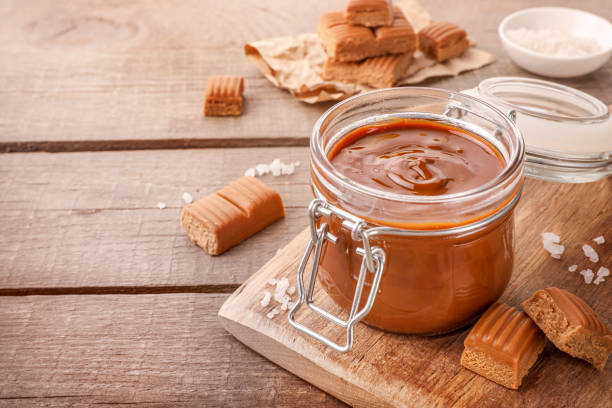
Troubleshooting Common Issues
Stubborn residue can be a persistent challenge when removing toffee from glass surfaces. In such cases, applying gentle heat, such as with a hairdryer, can help soften the residue, making it easier to scrape away with a plastic spatula or butter knife.
For particularly stubborn residue, soaking the affected area in warm, soapy water or using a commercial adhesive remover may be necessary.
Stained glass resulting from caramelized sugar or other toffee ingredients can be addressed by creating a paste of baking soda and water, applying it to the stained areas, and gently scrubbing with a soft brush.
A mixture of vinegar and water can help lift stubborn stains from glass surfaces. Lingering odors from cooking toffee can often be neutralized by wiping the glass surface with a solution of equal parts water and vinegar or by placing a bowl of baking soda near the affected area to absorb odors.
Alternatively, leaving the glass pan outdoors in fresh air for a period of time can help dissipate any remaining odors.
Post-Cleaning Care
Properly Drying the Glass Pan
After cleaning the glass pan, it’s essential to ensure that it is thoroughly dried to prevent water spots or streaks from forming. Here’s how to properly dry the glass pan:
- Towel Drying: Use a clean, dry towel to wipe down the glass surface, removing any excess water. Ensure that the entire surface, including corners and edges, is thoroughly dried.
- Air Drying: Allow the glass pan to air dry completely in a well-ventilated area. Place it upside down on a drying rack or prop it up slightly to allow air circulation underneath.
- Patience: Take your time to ensure that the glass pan is completely dry before storing it. Avoid rushing the drying process, as any remaining moisture can lead to water spots or streaks.
Storage Tips to Prevent Future Sticking
To prevent toffee or other sticky substances from adhering to the glass pan in the future, follow these storage tips:
- Properly Grease the Pan: Before using the glass pan for baking or cooking, ensure that it is properly greased or lined with parchment paper to create a non-stick surface.
- Use Cooking Spray: Apply a thin layer of cooking spray to the glass pan before adding ingredients. Cooking spray can help create a barrier between the food and the glass surface, preventing sticking.
- Avoid Abrasive Cleaners: When cleaning the glass pan, avoid using abrasive cleaners or scrubbers that could scratch the surface. Instead, opt for gentle cleaning methods using mild dish soap and warm water.
- Store Properly: Store the glass pan in a cool, dry place away from direct sunlight and heat sources. Avoid stacking heavy items on top of the glass pan, as this could lead to damage or breakage.
- Regular Maintenance: Regularly inspect the glass pan for any signs of wear or damage, such as scratches or chips. Replace the pan if necessary to maintain its integrity and non-stick properties.
By properly drying the glass pan after cleaning and following these storage tips, you can help prolong its lifespan and prevent future sticking issues. With proper care and maintenance, your glass pan can continue to provide excellent baking and cooking results for years to come.

Frequently Asked Questions (FAQs) – Get Toffee Out Of Glass Pan
Q: How can I effortlessly remove toffee residue from my glass pan?
A: We’ve got you covered! Simply follow our easy steps to say goodbye to sticky toffee remnants in your glass pan.
Q: Will using household items damage my glass pan while removing toffee?
A: Absolutely not! Our method ensures gentle cleaning using common household items, preserving the integrity of your beloved glass pan.
Q: Can I effectively remove toffee from my glass pan without extensive scrubbing?
A: Yes, indeed! Our technique minimizes scrubbing efforts, making the cleaning process a breeze.
Q: Is there a quick and efficient way to eliminate toffee residue from my glass pan?
A: Absolutely! Our method guarantees swift removal of stubborn toffee residue, saving you time and hassle in the kitchen.
Q: How can I restore the pristine condition of my glass pan after toffee spills?
A: Fear not! Our approach not only removes toffee residue but also restores your glass pan to its sparkling glory, ensuring it looks as good as new.
Q: Can I trust this method to effectively clean my glass pan without leaving behind any sticky residue?
A: Absolutely! Our proven technique ensures thorough cleaning, leaving your glass pan free from any sticky residue or unpleasant odors.
Q: Is it possible to remove toffee from my glass pan using eco-friendly methods?
A: Yes, indeed! Our environmentally conscious approach utilizes safe and eco-friendly ingredients, making it a sustainable choice for cleaning your glass pan.
Q: Will this method work for removing toffee stains of varying ages from my glass pan?
A: Certainly! Our technique is designed to tackle toffee stains of all ages, ensuring reliable results regardless of how long the residue has been lingering in your glass pan.
Q: Can I use this method to clean other types of sticky residues from my glass pan?
A: Absolutely! While our method is specifically tailored for toffee removal, it’s also effective for cleaning other sticky residues, providing versatile cleaning solutions for your kitchenware.
Q: Is there a risk of damaging my glass pan while using this cleaning method?
A: Not at all! Our approach is gentle yet effective, ensuring safe cleaning without any risk of damage to your glass pan.
Conclusion
In conclusion, removing toffee residue from a glass pan requires patience, diligence, and the right tools and techniques.
By employing methods such as soaking, heating, and gentle scraping with appropriate utensils, one can effectively restore the pan to its pristine condition without causing damage.
Additionally, preventive measures such as greasing the pan beforehand or lining it with parchment paper can mitigate the likelihood of toffee sticking in the future.
With these strategies in mind, tackling stubborn toffee stains becomes a manageable task, ensuring both the longevity of your glass pans and the success of your culinary endeavors.